Ripple Effect has been delivering training in agroecological farming combined with social change, food security and income improvement in East Africa since 1988.
I first visited in 1999, prompted by the frequently cited assertion that “organic farming is all very well for rich, white people, but it will never feed the world.” I wanted to see for myself, in an area where successful farming is a matter of life and death.
After my recent third visit, 25 years later, I am convinced that small scale agroecological farming, if well-practiced and supported, can not only produce more and better food, and better food security than Western-style input-intensive monocultures, it can also do so while fighting climate change, promoting biodiversity and healthy diets, and preserving human dignity and agency.

Below I detail some of the techniques and changes that are contributing to these improvements; seeing them in action is why I have supported Ripple Effect for 25 years.
Observations, techniques and drivers of positive change
Composting and soil fertility building
Synthetic fertilizer is often prohibitively expensive for smallholder farmers and if used can lead to soils becoming acidic and sometimes unusable. Ripple Effect farmers are trained in compost making which can provide the fertility to support yields that are as high as those that rely on synthetic fertilisers, without the danger of acidification and with the added benefit of building organic matter which boosts the water-holding capacity of the soil, thereby improving resilience to failing rains and drought.
Livestock management
Ripple Effect, formerly called “Send a Cow”, was indeed founded in 1988 by some Devon farmers who sent calf heifers to smallholder farmers in Uganda. The work of Ripple Effect has since expanded to cover all aspects of agroecological smallholder farming and much more, but livestock husbandry is still a key part of many Ripple Effect farmers’ farming systems.
This enables farmers to produce and generate income from milk, meat, and eggs but, perhaps even more importantly, provides a source of the dung and urine that are so critical to compost making – rebuilding soil’s organic matter and boosting yields without expensive and damaging synthetic fertilisers.
Dairy cows are generally crosses between local breeds and European breeds including Friesian, Jersey, Ayrshire and occasionally even the high-yielding Holstein. They are largely fed a mixture of various legumes (eg desmodium or calliandra) and the local napia grass, sometimes mixed with dry maize stalks, are chopped to about 4cm.
I never once saw cattle being fed soya or grain (the source of up to half the typical UK dairy cow’s energy and protein). Yields ranged from 800 to 4000 litres/year depending on breed, diet, and management. For reference, on much more digestible food, the maximum yield from forage (without grain and soya supplementation) in the UK is about 5000 litres. With the exception of some Holstein crosses, the cows looked healthy and well-cared-for; typically even the high yielding crosses had double the productive life (6-8 lactations) of a dairy cow in the UK ( 3-4 lactations). Local cows could live for as long as thirty years. Such longevity should reassure those who question the welfare of cows in the tropics… at least where farmers were trained and supported by Ripple Effect.
Ripple Effect farmers typically house their cows to allow the collection of the valuable urine and dung and to protect livestock and manure from the sun. They also provide veterinary and animal husbandry training and ongoing support. Most farmers were using artificial insemination as a means of improving genetics and milk yields.
If farmers received a cow as part of their participation in a three year Ripple Effect programme, they then passed on the first heifer calf to another Ripple Effect farmer. The same applies to chickens, goats and pigs, in a reciprocal loop, that also encourages good animal husbandry.
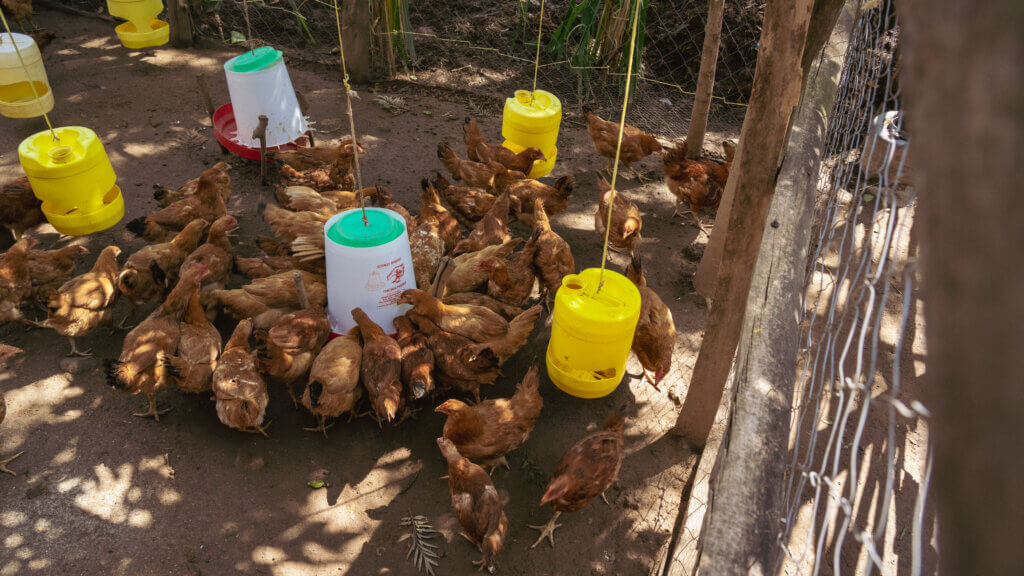
In contrast to the Global North, where most dairy cows get much of their energy and protein from maize, soya and grain (some contributing to rainforest deforestation in what is largely a linear and extractive system), Ripple Effect cows are fed almost exclusively on locally grown food, most of it from soil carbon boosting perennial crops, and some coming from prunings from local trees.
Given much of the Global North’s low animal welfare standards, brief bovine lives, climate-change-driving-diets and CO2 emitting lifestyles, we are in no position to reasonably question the keeping of these cows.
Gender and social inclusion
Perhaps my greatest admiration for Ripple Effect is an area far from my expertise: that of inclusion and, in particular, the rebalancing of gender roles. The gender imbalance of work and decision making in Eastern Africa may be a stereotype but it’s supported both by statistics – women produce approximately 80 per cent of Africa’s food but own less than 10 per cent of the land – and also in the many stories we heard direct from the farmers themselves.
In the UK, the pace of change and progress has been painfully slow and is often highly divisive. Ripple Effect, through their dedicated social programme, seemed able to effect seismic change within just a few months which substantially built on the capacity of households and their ability to improve income and prospects.
The process starts with populating a grid, often etched on the ground – tasks are marked along the top and household members down the side. Pebbles are used to denote who does what. I am told that the stark, visual imbalance almost invariably revealed by this method, is itself a powerful catalyst for change. The aim and focus, however, is not to attribute blame or focus on infringed rights, but to agree on how much more could be achieved, and what the benefits to the household would be if tasks were distributed more evenly, and if decision making was more inclusive.
I would not have believed the effectiveness of this work if I had not met so many participants who mentioned it as a key driver to change; bizarrely to me, the change was also described as if it really wasn’t that big a deal, which astounded me. Every time I questioned trainers and participants I was struck by the absence of judgment or blame in their description of the process – this was something that benefited everyone and the emphasis was on the benefits, both individually and to the group by building their collective capacity.
Having sat through hours of training on diversity and inclusion in the UK, with so little obvious change effected in underlying behaviours, we can learn a lot here. There were occasions when it was all too much and the man of the household left (sometimes to return later, when the benefits were plain to see) but in the majority of cases, households moved forward together.

Ripple Effect also works with other excluded and disadvantaged groups with specific programmes that support orphans, victims of genocide and the return of captured soldier brides who have not been welcomed back into their communities. Ripple Effect’s particular and remarkable expertise in this area has led to them being sort sought out as a partner to help perform this role in other joint projects.
Pest control
Despite the much higher temperatures and the potential for higher pest pressure and danger of catastrophic crop losses, I was impressed in most cases by the absence of pests and disease on the smallholders crops we visited.
By the end of the three year programme, most Ripple Effect-trained farmers have developed a good understanding of how the crops on their farms interact with each other and the farm ecology; many used interplanting of vegetables with onions, or Mexican marigolds to confuse and deter pests. Going further, many have adopted what is known as “Push-Pull” (a technique developed by the International Centre of Insect Physiology and Ecology) to deter the corn stem borer pest from their maize crops.
Riverford sponsored a project that trained farmers in this method from 2020-2023, and Push-Pull now appears widespread throughout Eastern Africa. The maize is interplanted with the legume desmodium (which makes a good high protein ration for cows). The desmodium emits a smell which confuses and deters the adult stem borer, preventing it from laying eggs on the maize; instead it abandons the crop and for reasons which I don’t entirely understand, is attracted to the Napier grass instead (also fed to cows) planted around the edges of the maize crop; the grass then envelops the developing borer grub, which perishes within the grass.
The ‘push’ of the Desmodium, combined with the ‘pull’ of the napier grass has proved to be highly effective, reducing losses from corn stem borer (which could be 100 per cent in a bad year) to losses of less than 20 per cent on average. On one farmer’s fields, we saw an area where he had failed to sow the desmodium and where most leaves had been shredded by the bug while next door, where desmodium was growing, losses were almost nil.

Most Ripple Effect-trained farmers are also adept at making their own natural pesticides from locally sourced, on-farm materials, such as ash or rabbit urine and sometimes using insecticidal plants such as neem or even nicotine. I was surprised and impressed to hear one particularly experienced farmer say that if he found it necessary to resort to these homemade pesticides, he considered that he had failed. His aim was to keep pests in balance by managing the farm environment rather than killing them directly. I have yet to hear a British farmer express such ecological sophistication; far more often the answer is to reach for the pesticide container.
I couldn’t help concluding that the best of these farmers had a level of sophistication and understanding of the interactions of their crops, soil and environment that went way beyond that of even the best conventional farmers in the UK. When Push-Pull was described to me I didn’t really believe it; it seemed too good to be true… until I saw it with my own eyes.
Moisture and soil conservation
When rainfall arrives in East Africa it is typically intense and increasingly unpredictable. To reduce soil loss and retain water on the holding, farmers are trained in a range of techniques – the best for a particular farm depends on soil type, gradient and cropping.
Some of these techniques include:
- Surface mulching, to reduce evaporative loss from the soil surface and to protect the soil surface from intense rain; to protect emerging seedlings; to slow runoff, and to reduce soil loss
- Contour trenches to hold water, encourage percolation, and reduce runoff
- Mandala gardens which direct runoff into the centre of doughnut-shaped intensive gardens
- Terracing
- Sunken planting holes and trenches, particularly for bananas and passion fruit in low rainfall areas
In East Kenya, which is already a low rainfall area often with sandy soils with low moisture holding capacity, many crops, particularly maize, had died off or would produce little due to failing rains.
Watching women like Fatuma (below) walk 2km carrying 20 litres of water for their families, livestock and failing crops made me consider funding a community borehole to help provide food security through the ability to irrigate high value food crops. Caution is needed to avoid lowering the water table and impacting shallow wells, and also to safeguard water as a community resource. The Ripple Effect programmes team are already in discussion about how to integrate better access to water into the project, in a way that doesn’t have negative knock-on effects for the wider community.
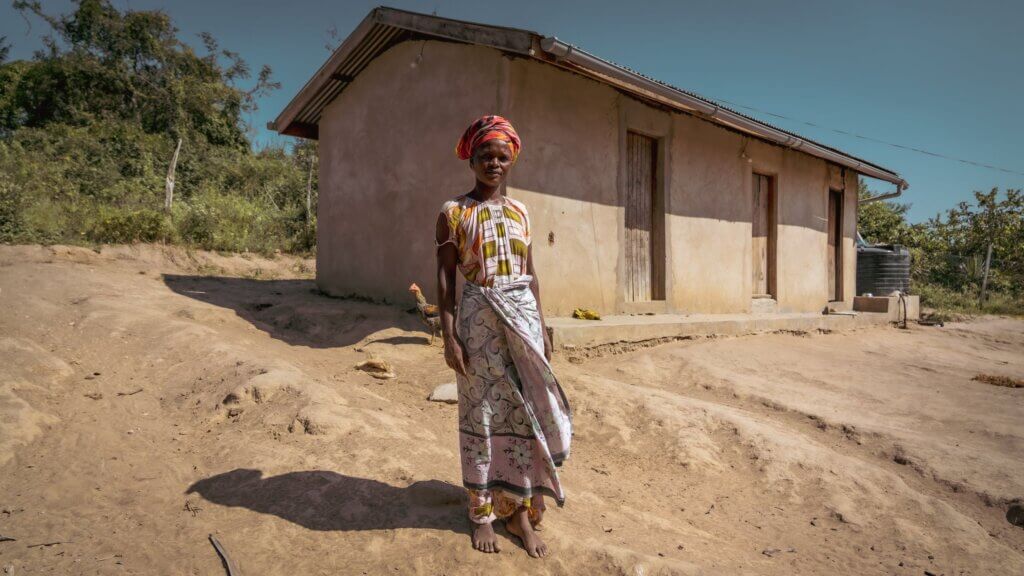
Intensive veg
Particularly on low fertility soils, Ripple Effect farmers typically concentrate available fertility, water, and effort on small intensive gardens, producing vegetables for domestic consumption and occasionally for sale.
This might be in the form of:
- A keyhole garden – a volcano shaped garden with a cutout keyhole to allow access to the centre for watering and to manage soil fertility. This is typically 3m in diameter and next to the home and washing up area so that waste water can be used for crop watering. Three such keyhole gardens would normally produce all the green veg for a household of six to eight people, with minimal effort
- A sack garden – a grain sack, or larger dumpy bag, is filled with soil and compost, normally with a porous, stone-filled central core for watering. Veg is planted in the top and holes on the sides. It’s typically placed near the home and cropped for two years before re-filling
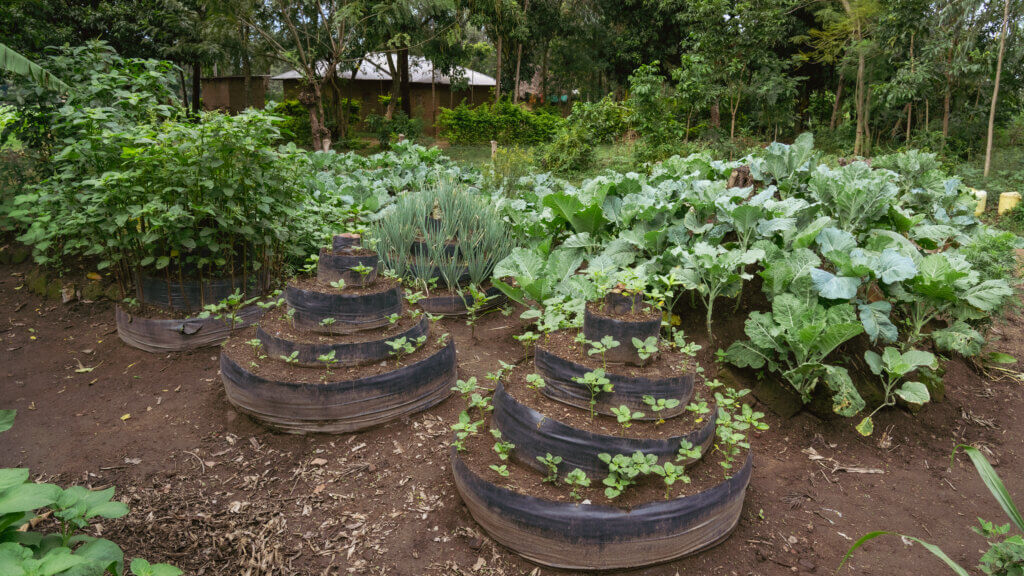
Locally driven, appropriate, and community based
88 per cent of Ripple Effect’s staff are based in the countries where they are active. Projects always start with community engagement and listening to the needs of smallholder farmers. Training is often delivered by Ripple Effect graduate farmers and many of the farmers go on to be peer farmers themselves, helping to train their neighbours and create a local ripple which will hopefully spread across East Africa.
Some peer farmers had effectively set up their farms as demonstration farms, supplying not just the knowledge but also plants and seeds (sometimes for free) to the farmers they helped inspire and train.
We travelled with Isaac who was a child when his parents were participants in an early Ripple Effect programme which changed his life forever. After training, he became a Farm Systems Manager for Ripple Effect and took great pride in giving back to the organisation that had got him started.
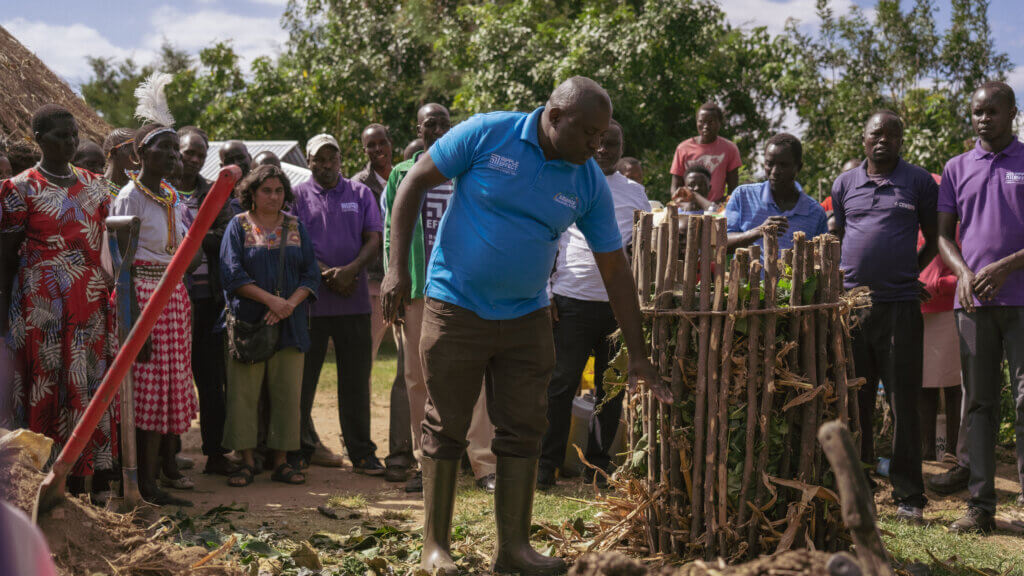
Food security
Maize is a key crop across Eastern Africa, often providing the bulk of the calories produced on a holding; it is, however, highly susceptible to drought and failing rains, requires good fertility and the use of only manual labour (as is the norm with smallholder farmers), so requires a prodigious amount of work to clear, prepare a seedbed, and weed – often for low yields.
Farmers are encouraged by their governments (often with substantial subsidies) to use hybrid varieties and the associated fertiliser and pesticides; in a good year this can produce high yields but in dry years this system is less resilient and can leave the farmer in debt.
Maize is easily sold and much loved for making ugali, the staple starch in much of Uganda, but there are many more resilient, and possibly more nutritious, alternatives such as casava (which can wait in the soil until needed for three years), banana, plantain, jack fruit, amaranthus, cow peas, and yams in wetter areas. Ripple Effect is working with farmers to bring about a gradual cultural shift away from such heavy reliance on maize by demonstrating the manifold advantages of these other crops.
Generating Cash
Increasingly Ripple Effect is focusing on income generation and entrepreneurship alongside subsistence and food security. This can mean diversifying away from the traditional crops – such as maize and coffee, which are often sold to traders for very little return – towards higher value crops grown for a local market, which are often sold locally and direct.

In many instances, farmers had organised themselves into groups or co-ops to help with processing, continuity, and to provide larger, saleable volumes. This is very common with milk production and increasingly with juicing and pulping of, for example, mango and passion fruit. Many farmers were also growing plants to sell to other farmers; a few sold their homemade plant feeds and natural pest repellants. There was an increasing emphasis on intensive, high value vegetable production for domestic consumption and local sale.
Other areas of training and improvement by Ripple Effect
Small but important and accessible changes include:
- Fuel-saving stoves. Most cooking in rural East Africa is over wood or charcoal which both increase the pressure on the diminishing number of trees. Most Ripple Effect farmers have built fuel-saving stoves, which cut fuel use by half and massively reduce eye and respiratory ill-health by almost completely removing smoke from the cooking huts. A few more prosperous farmers with livestock had even built low tech anaerobic digesters and were able to cook over home-generated methane stoves
- Every Ripple Effect-trained smallholder I visited had a scrupulously clean long drop toilet and washing facilities that inspired confidence. All had drying racks for their washing up and very effective, foot operated tip taps that allowed hand washing with a fraction of the water and better hygiene
Over the last 14 years, our generous Riverford customers have helped raise £1.2m for Ripple Effect. If you continue to believe in this work, please support Ripple Effect’s appeal this Christmas. The first £25,000 in donations will be matched, pound for pound.


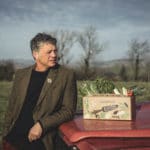

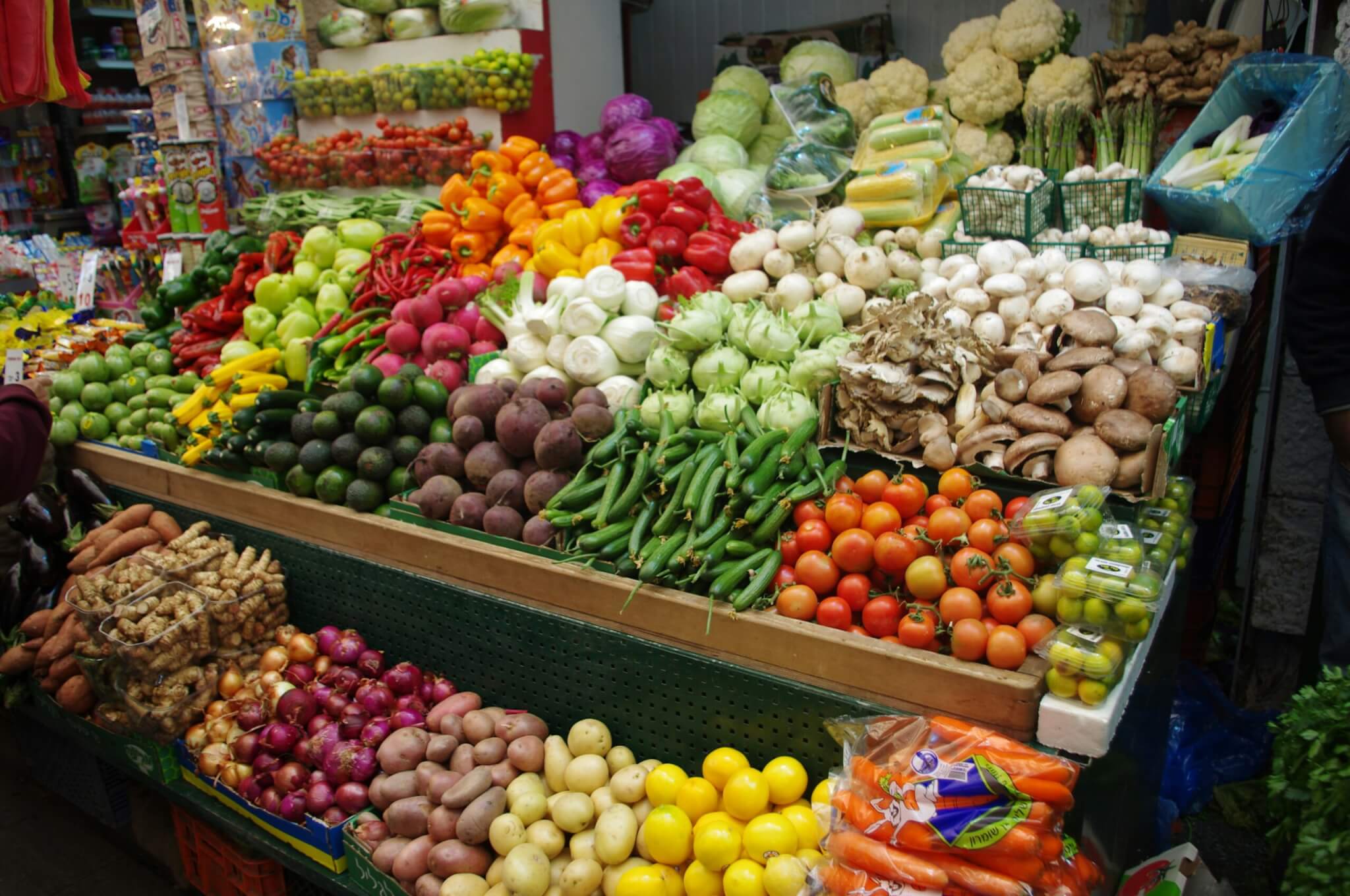

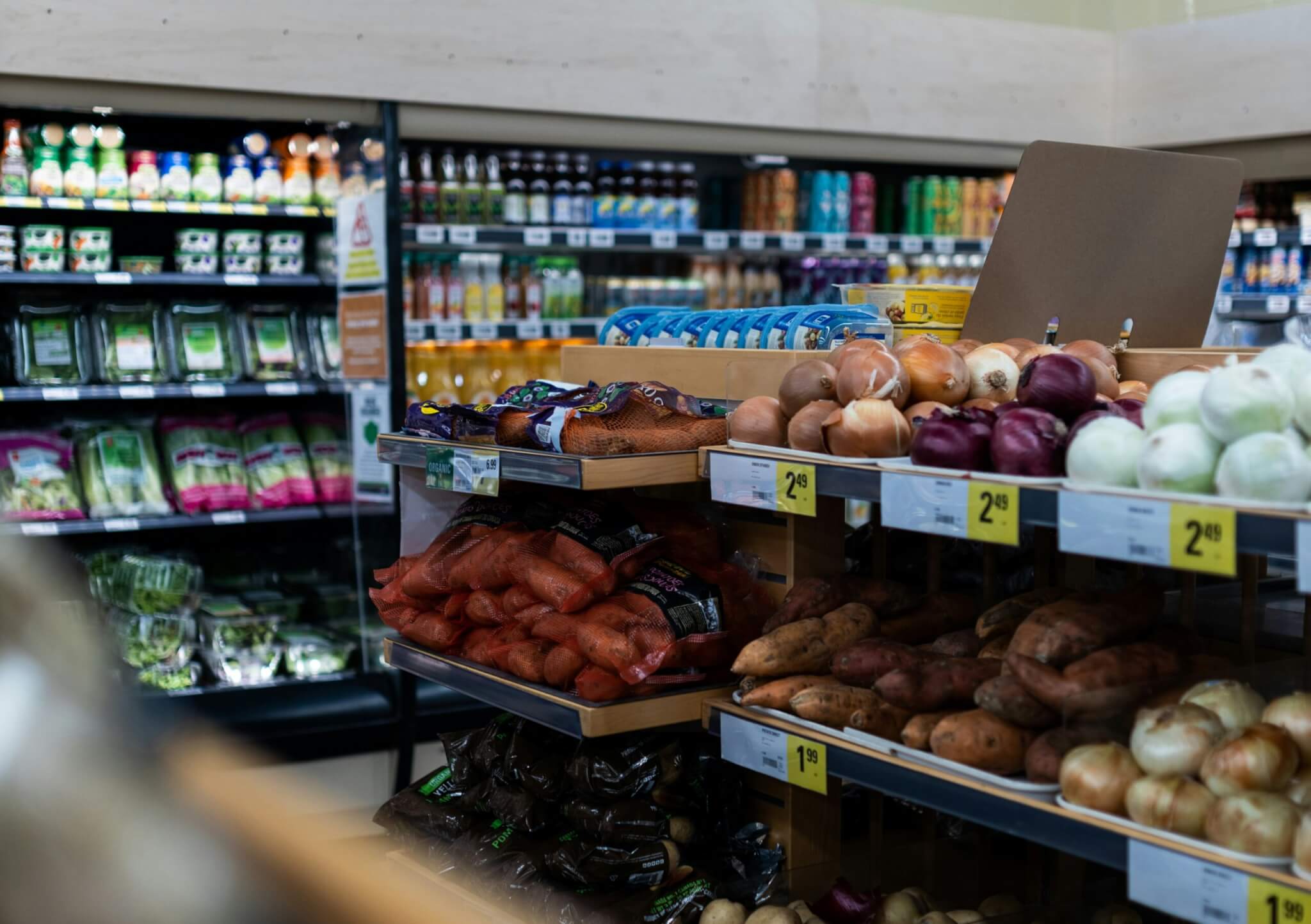

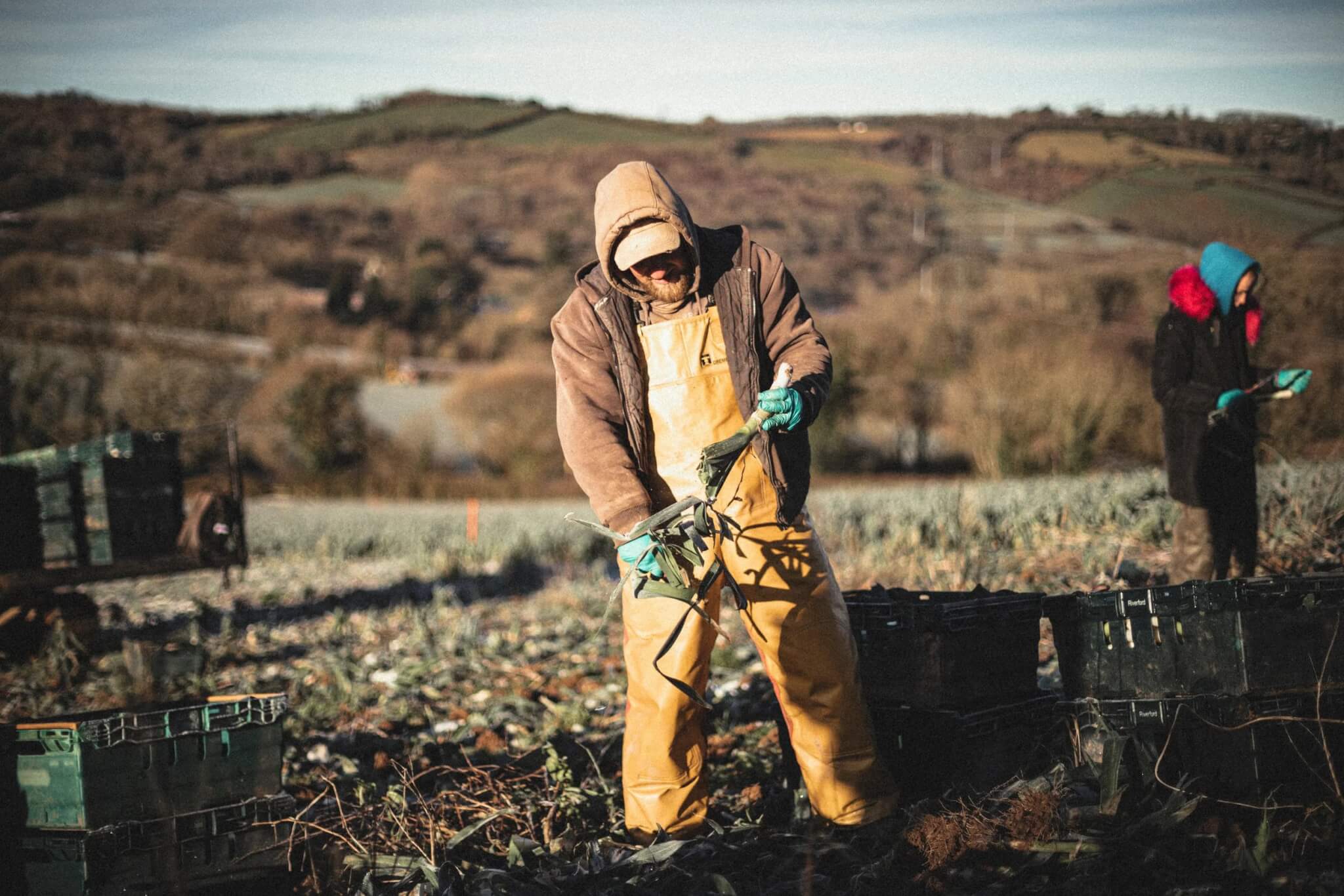
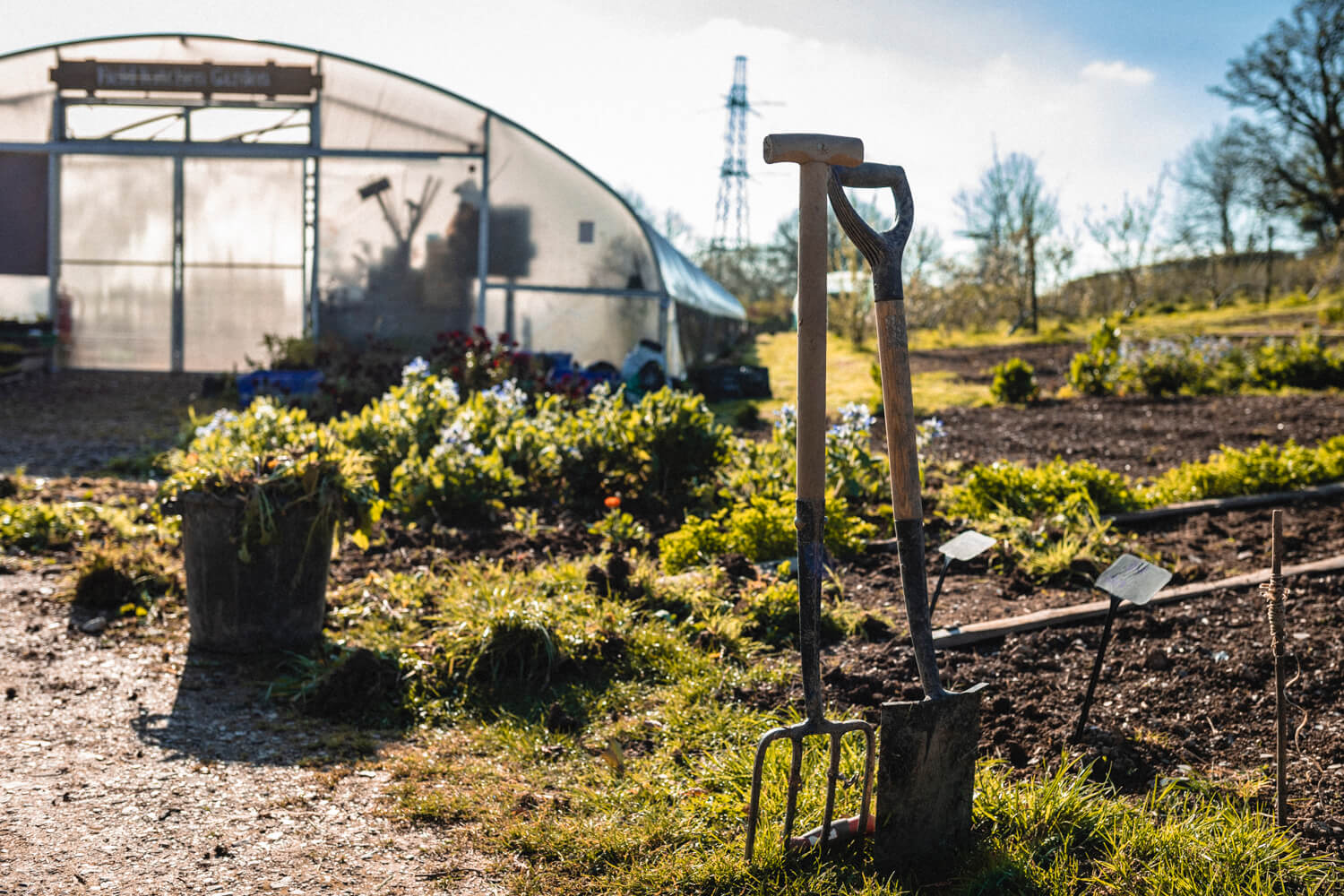
This article is SO encouraging, as are Riverford’s and Guy’s long-term support of Ripple Effect. Thanks
Brilliant and inspiring work from Ripple Effect. Diverse and people centric solutions will be so beneficial compared with the western model of intensive and high risk agriculture. Why high risk? Soils are depleted of organic matter that is never replaced, more and more synthetic fertilisers are needed to produce less and less yield. No sense at all and ultimately unsustainable. So good to donate in order to offset war, starvation, and violence.
Such an inspiring article! When are some of these people coming to train western farmers?
Funny you should ask, Greenwitch…
Meshark Sikuku, Ripple Effect’s head of training in sustainable farming, is going to be presenting on “Farming today for tomorrow’s climate” at the Oxford Real Farming Conference on Thursday 9th Jan, 11-12:30 at the Wesley Memorial Methodist Church.
The session will be hosted by Guy Singh-Watson and also gives a platform to sustainable farming trainers from France and Peru. If you’re not going to the ORFC in person the session is being live-streamed: https://www.tickettailor.com/events/oxfordrealfarmingconference/1222861
Meshark and Guy are also going to be talking about Ripple Effect’s approach at an evening gathering in Totnes on Tuesday 1th Jan: https://www.eventbrite.co.uk/e/from-devon-to-diani-farming-for-a-better-future-tickets-1113218399199.
(Yes, I work for Ripple Effect, and we’re so excited Meshark is coming to the UK…)